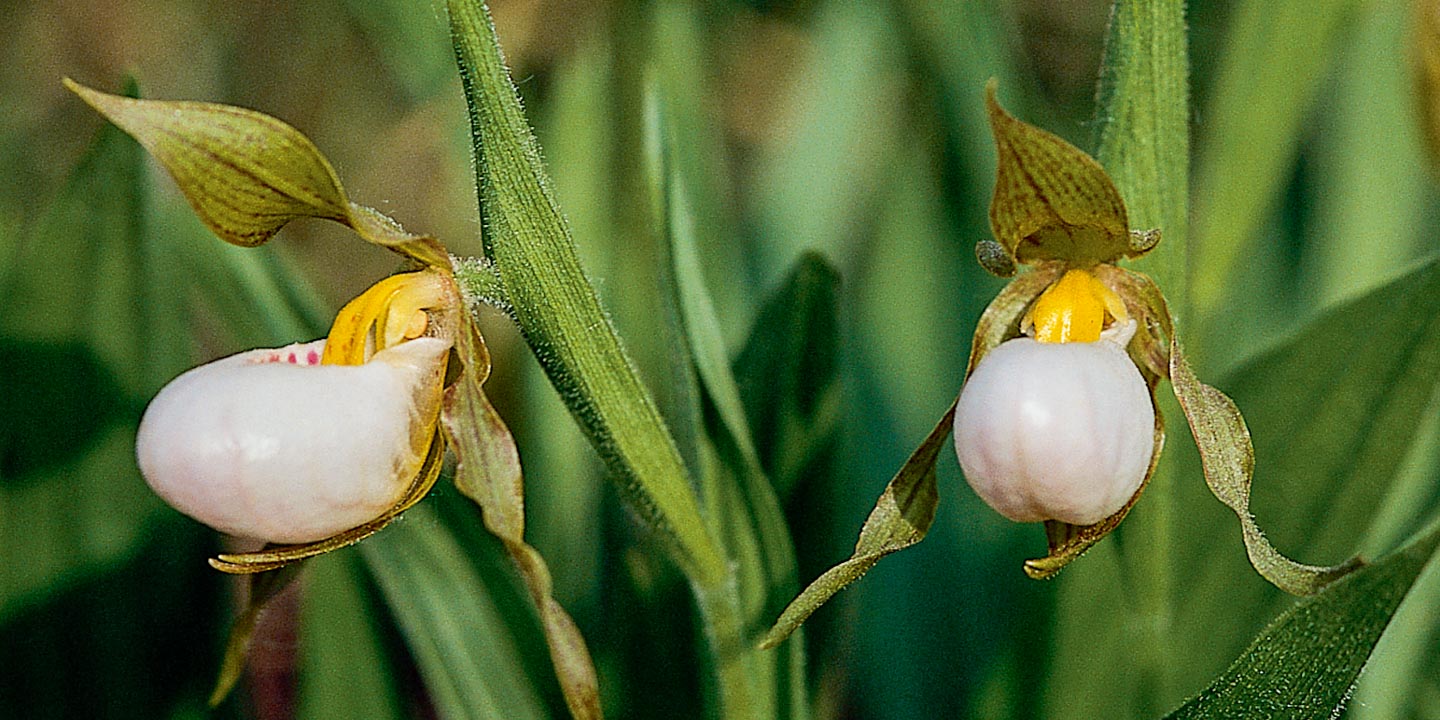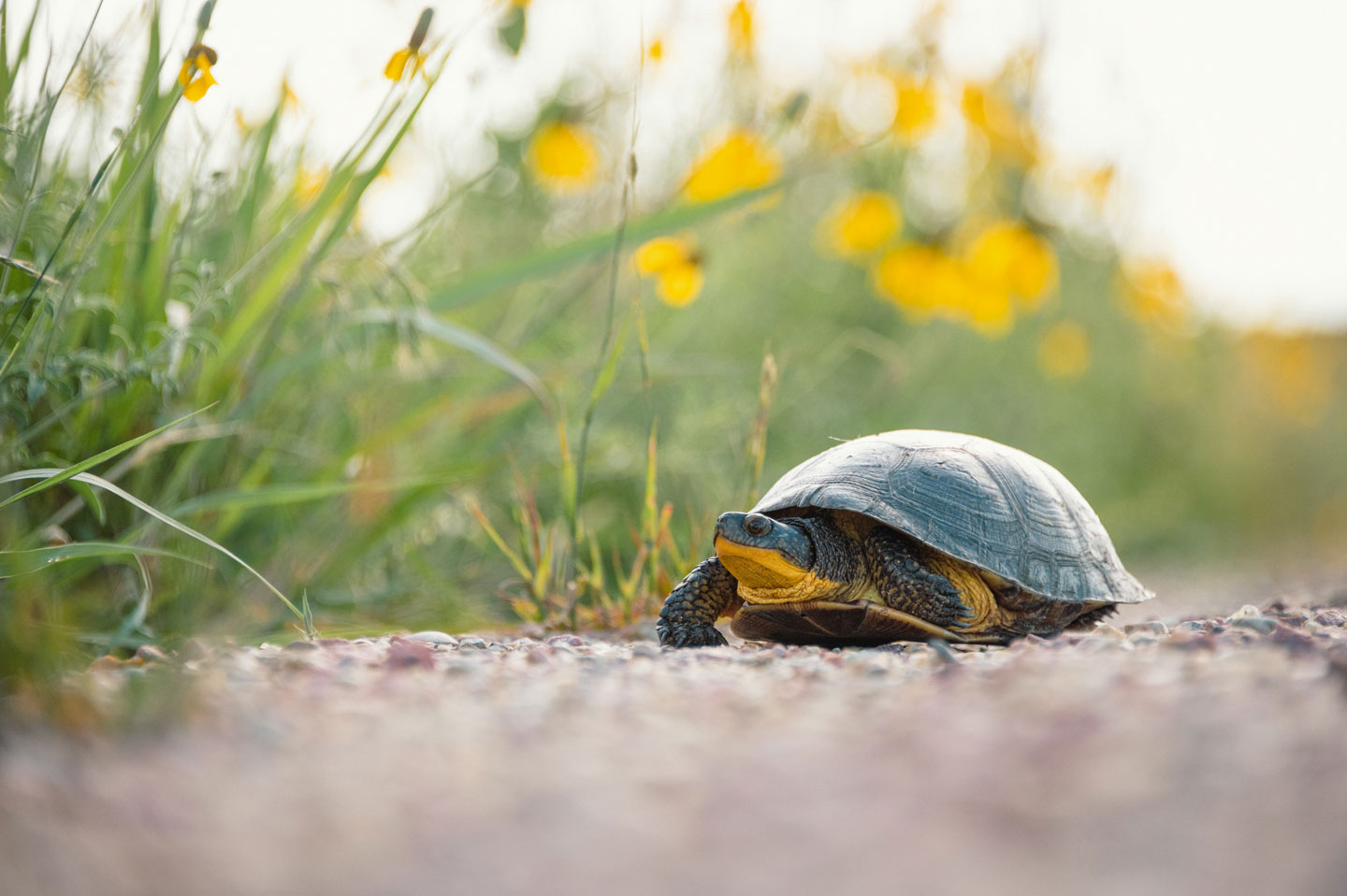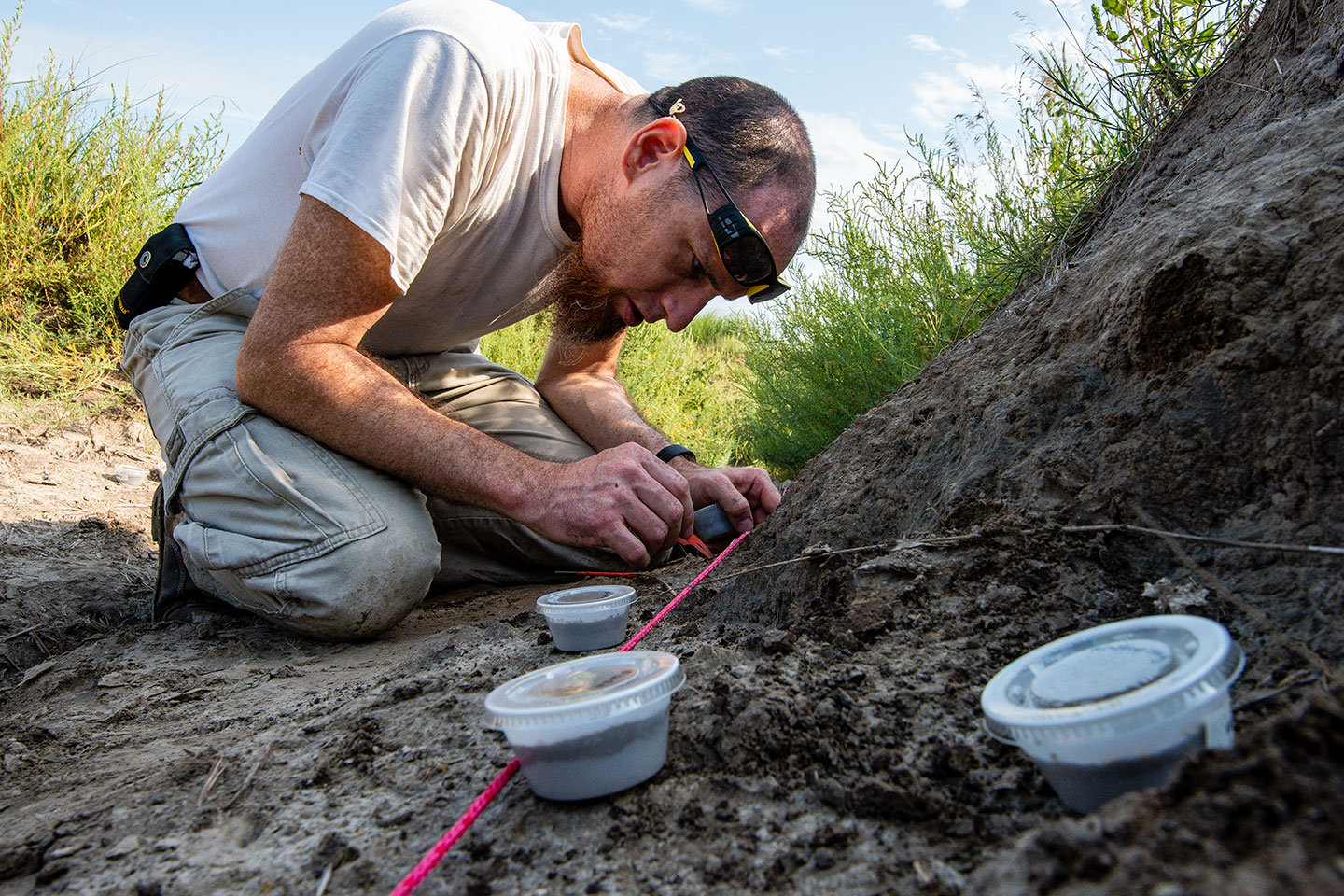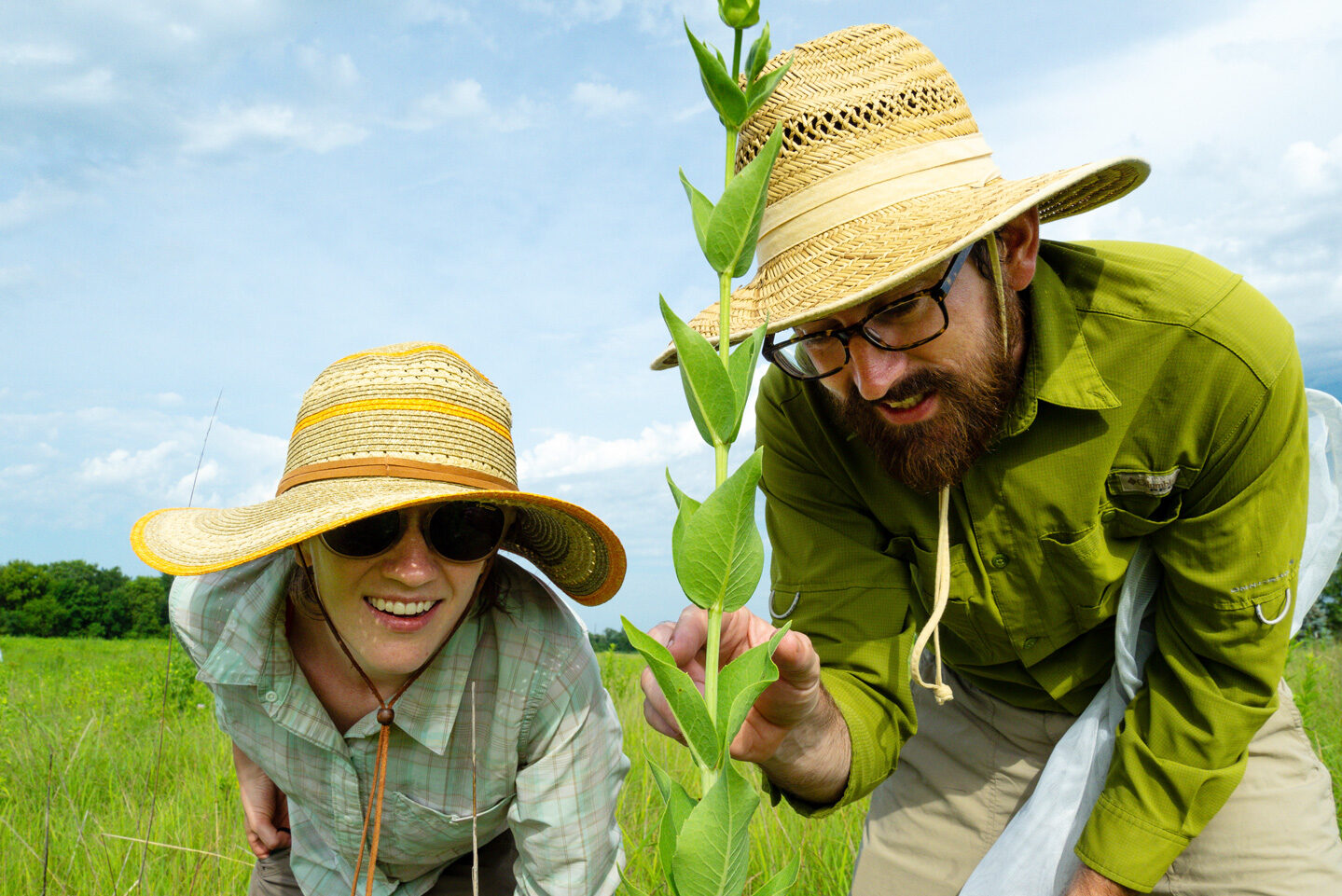Small white lady's slippers
Status: Threatened

A native, long-lived perennial, Small White Lady’s Slipper (Cypripedium candidum) grows from a fleshy rhizome. It forms in clumps with as many as 50 single stems coming from a single rhizome. It grows to heights of 4-14 inches in height with 2-4 leaves forming on the top half of the stem. Leaves are long and slender (2-6 inches long, 1-2 inches wide) and have parallel veins.
One flower forms per stem forms from mid-May to mid-June. The lower lip of the flower (the “slipper”) is an inflated white to pale purple pouch. Extending from the sepals on the stem into the pouch is a bright yellow upper lip which is often splashed with red speckles. A single leaf extends over the flower.
Fruit is an elongated green capsule.
Small White Lady’s Slipper is listed as Threatened in Nebraska. It is not federally listed.
Range
Small White Lady’s Slipper is found from eastern Canada south to Missouri, from New York west to North Dakota.
In Nebraska, it is found in the northeastern part of the state from Cherry County extending to the start of (but not including) the deciduous forests along the Missouri River. And south to Hall County. Within this area, it is confined mainly to sites along the Loup River system.
Habitat
Found in wet meadows and moist prairies. Small White Lady’s Slipper requires deep, moist soils, but also sites with full sun. It can also be found in roadsides adjacent to these habitats. It is absent from prairies with a history of livestock grazing or crop production.
Reproduction
As a long-lived species, reproductive maturity is not reached until twelve years of age. Flowers from in mid-May through mid-June. Pollination is believed to occur by small bees of the andrenid and halictine species.
Seeds are tiny (the size a speck of dust) due to the fact that seeds contain no cotyledon (food supply). Because seeds are so small, they are dispersed by wind and can be carried for great distances. However, do to the lack of a cotyledon, seeds require perfect habitat conditions for germination. Specifically, seeds require a specific species of mycorrhizal soil fungus which penetrates the seed coat and provides nutrients. It is unknown if the mycorrhizal fungus provides benefit to the plant once roots and leaves have formed.
Population status
As a species of the Tallgrass prairie, Small White Lady’s Slipper has experienced a similar fate as the rest of the prairies of North America – a nearly 95% decline. It is believed that before prairie conversion, Slippers was a relatively common species.
The biggest threats to Small White Lady’s Slipper include conversion of prairie habitat for crop production and urban development. Additionally, livestock grazing has shown to have dire consequences for the species. Although some grazing by wildlife has been documented, it is not proven to be detrimental to the species.
Other concerns include accidental herbicide spraying, out-competition from sod-forming non-native species and shading by woody vegetation.
Small White Lady’s Slipper is listed as Threatened in Nebraska. It is not federally listed.
Management and outlook
The survival of Small White Lady’s Slipper requires conservation of remaining wet meadows and prairies. Including conserving natural hydrologic systems and soil conditions. Additionally, on sites where the species is present, livestock grazing should be avoided.
Prescribed fire can benefit Small White Lady’s Slipper when done early before stems and leaves have come up for the year. Prescribed fire can help prevent encroachment of woody vegetation which can shade-out the small flower. Additionally, prescribed fire can help manage invasive, sod-forming species.
Annual haying should be avoided when Small White Lady’s Slipper is present.
Conservation help
Landowners wanting to help can look for the species on their land and take the above land management techniques.
Individuals wanting to help species can donate to conservation organizations dedicated to helping this and other Threatened or Endangered Species through research, land management and species conservation.
Finally, taking time to learn about Threatened and Endangered Species as well as sharing that knowledge with others is critical to the development of citizens who care for the future of Threatened and Endangered Species.
References
Cypripedium candidum. Minnesota Department of Natural Resources. Accessed December 22, 2017.
http://www.dnr.state.mn.us/rsg/profile.html?action=elementDetail&selectedElement=PMORC0Q050
Meet The Ladies: The Slipper Orchids: Cypripedium candidum. U. S. Department of Agriculture, U.S. Forest Service. Accessed December 22, 2017.
Cypripedium candidum. Minnesota Wildflowers: A Field Guide to the Flora of Minnesota. Accessed December 22, 2017.
Nebraska’s At-Risk Wildlife: Conserving Species and Their Habitats. Panella. Nebraska Natural Legacy Project. Pages 178-179.




